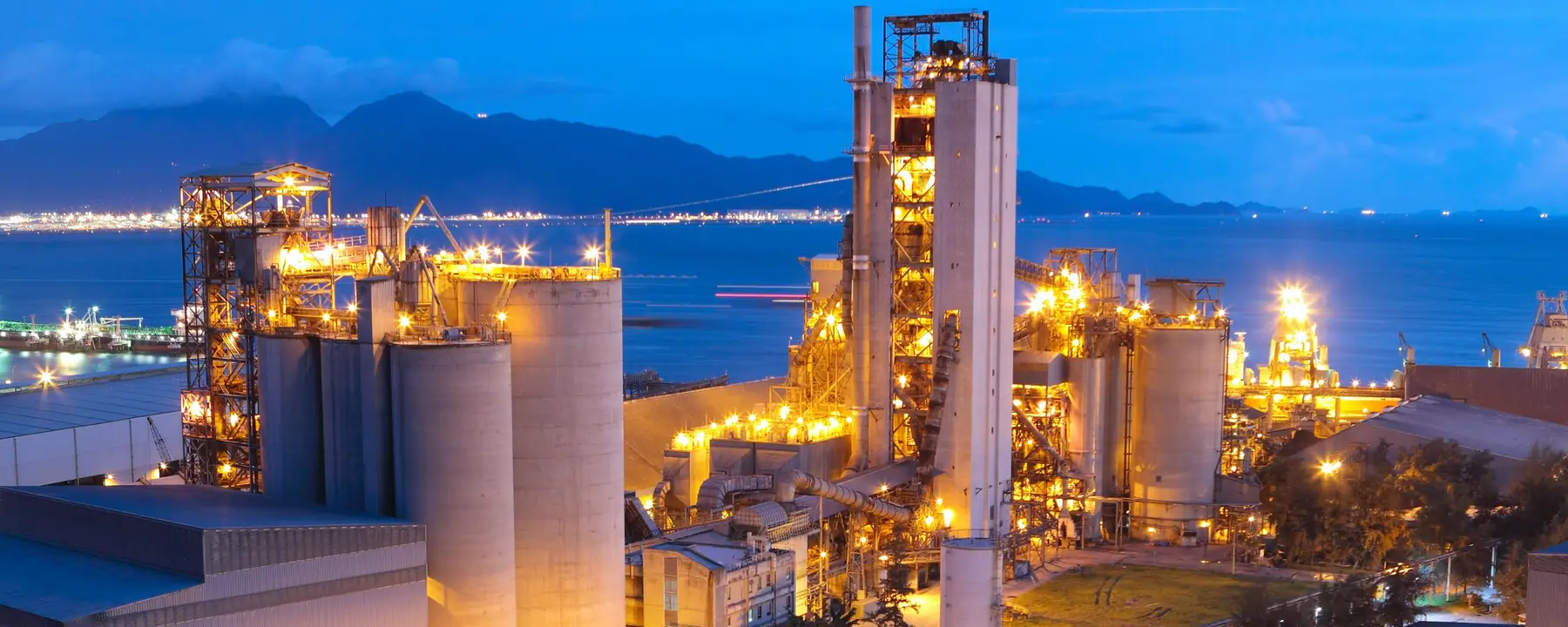Devising carbon mitigation solutions for high-emitting commercial cement plants
While fossil fuel–fired power plants account for about 40 percent of global energy-related CO2 emissions, cement plants are also large point sources of carbon dioxide emissions. In recent years, operators in this sector have begun looking into carbon capture and sequestration (CSS) technologies to mitigate CO2 emissions on a commercial scale.
For a commercial cement plant, a number of variables can pose unique challenges to reducing carbon emissions. First and foremost, the limestone raw material that feeds the cement production process is the primary contributor to a plant’s CO2 emissions, making retrofit carbon capture technologies critical for achieving emission reductions. Other engineering challenges associated with applying carbon capture technologies to cement plants include
- Determining the optimal integration point
- Addressing higher CO2 concentrations, heat availability for CO2 desorption, water management, and space availability at an existing plant
- Determining an optimal process design for integration.
In order to have potential for industry-wide adoption, any technology for capturing carbon dioxide emissions must present a cost-effective solution to these challenges.
Demonstrating Our CO2 Capture Technology at a Commercial Cement Plant
RTI’s solid sorbent CO2 capture technology—currently being developed for coal power plant applications—is a good fit for the cement industry based on its potential to substantially reduce the energy load, capital and operating costs, and evaporative emissions as compared to conventional CO2 scrubbing.
Our process selectively removes carbon dioxide from industrial exhaust gas streams through a cyclic, thermal-swing, absorption-desorption process, generating a high-purity CO2 product gas that is sequestration-ready. This type of carbon capture uses a dry, solids-based technology that fits well with the operational model of most cement plants. Tolerance to particulates and the use of nonhazardous materials are among the features that make our process a good match for cement plant implementation.
We were tasked with demonstrating the technical and economic feasibility of our carbon capture technology at a commercial cement plant in Norway. Under the first phase of this effort, which completed in June 2014, we evaluated sorbent performance using actual cement plant flue gas, provided detailed economic analyses, and developed a commercial design for our process. During the second phase, scheduled for completion in December 2016, our experts will design, build, and test a pilot prototype system at Norcem’s cement plant to gauge long-term process stability and collect critical performance data that will be used to update economic analyses and commercial process designs.
Demonstration of Economic and Technical Promise Leads to Continued Investigation of Cement Industry Application
Quantitative assessments of the technology’s primary economic performance indicators—such as capital cost, operating cost, cost for carbon captured/avoided, and energy consumption—revealed that the technology is economically competitive with conventional and next-generation technologies. These assessments also demonstrated that our process is a good candidate for waste heat utilization. Solid-sorbent carbon capture technology represents a 25 percent reduction in cost, with a more than 40 percent reduction possible with advances in sorbent stability and reactor design. In addition, the technology could create a 40 percent reduction in energy penalty. If successful, the RTI technology could substantially reduce greenhouse gas emissions from cement plants.
Phase I of the project also developed qualitative assessments of performance under varying process conditions, assessments of any health and environmental risks, and recommendations for potential improvements to the technology for industrial applications.
Given continued success in its development, our solid-sorbent carbon capture technology has the potential for application across a broad range of industries including cement, coal-fired power plants, natural gas combined cycle power plants, natural gas processing, steel plants, and other industrial sources.
- HeidelbergCement / Norcem
- Gassnova
- ECRA



